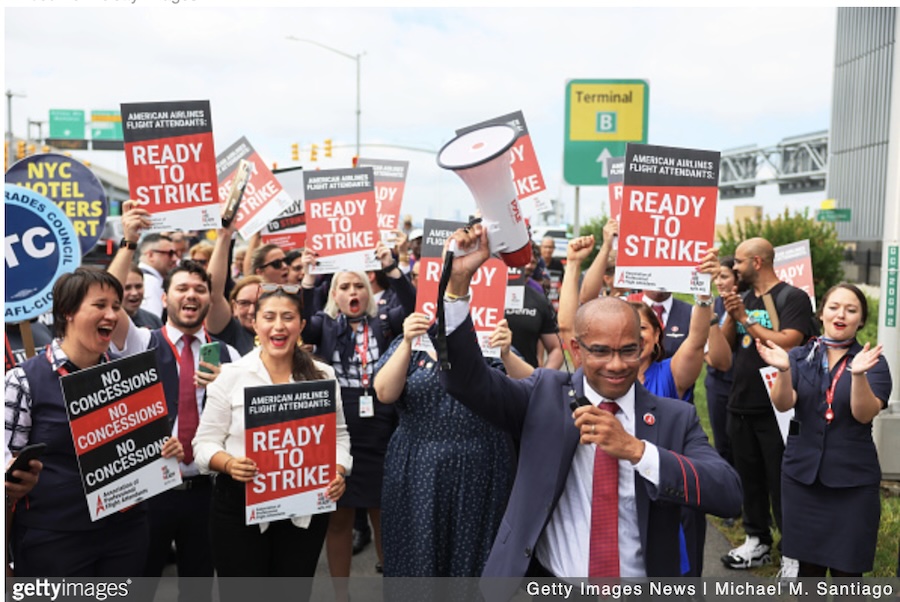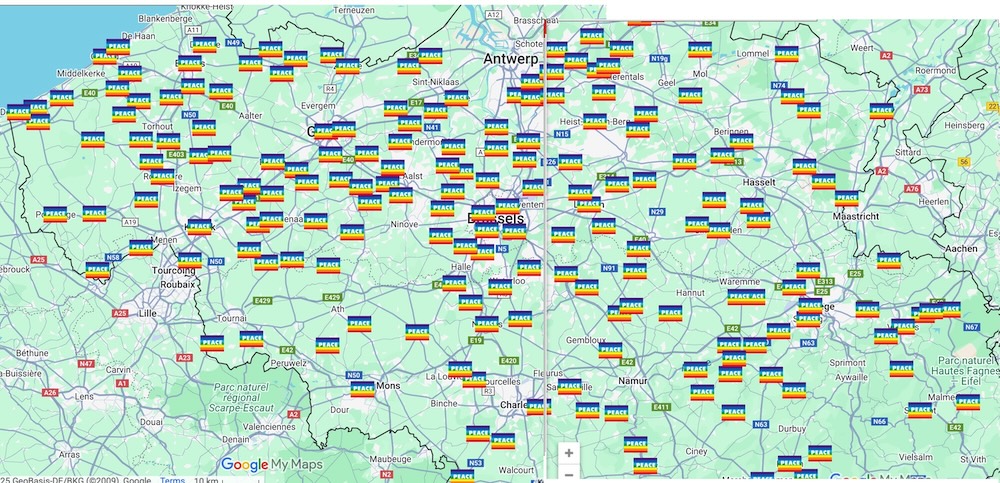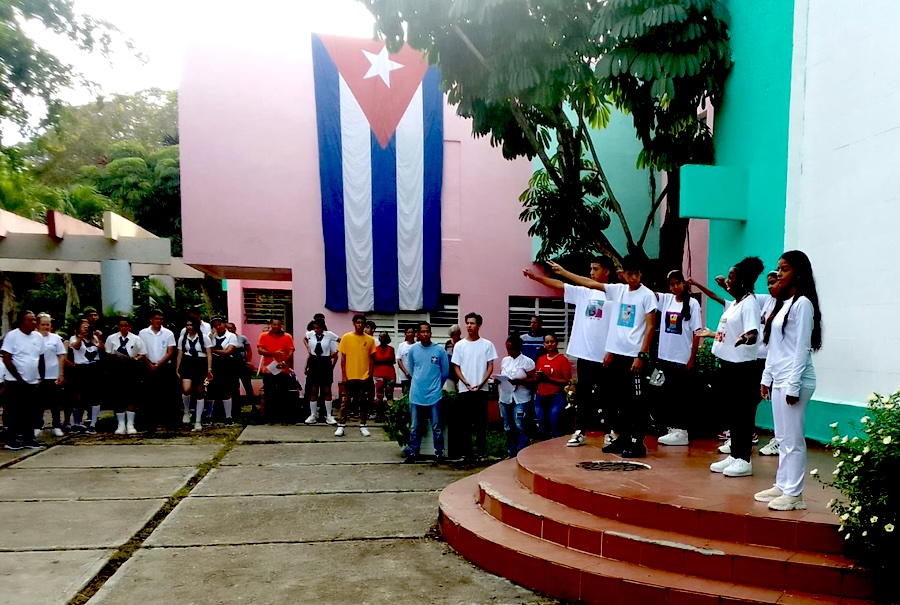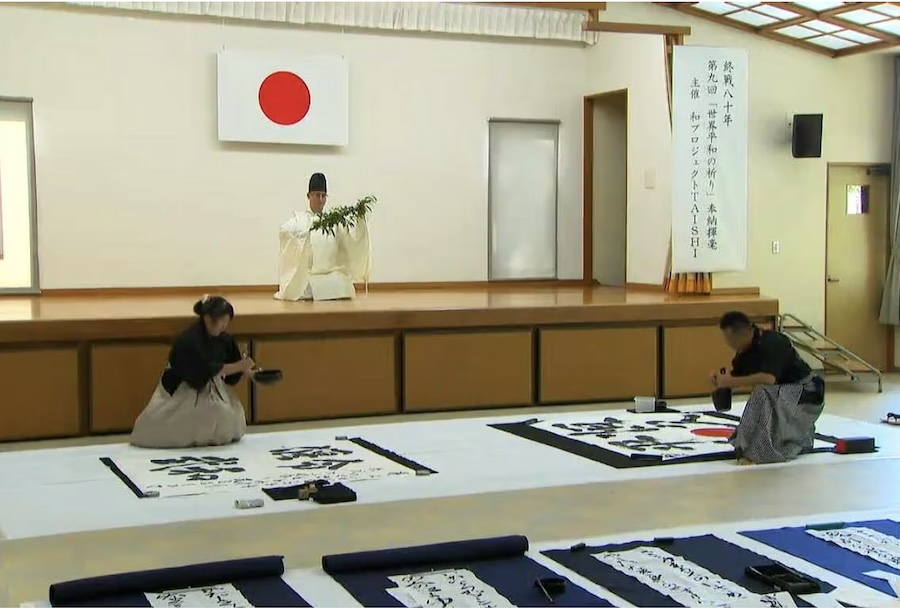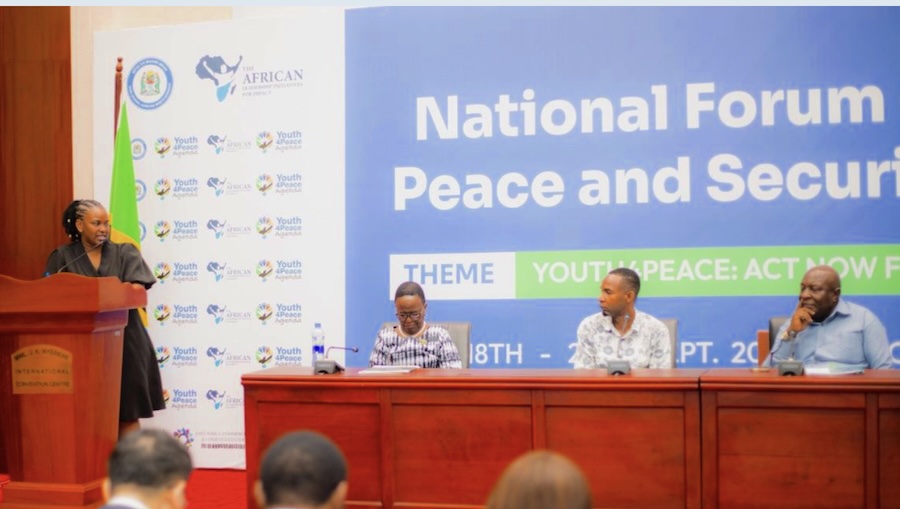. HUMAN RIGHTS .
An article by Jessica Corbett from Common Dreams (reprinted under Creative Commons CC BY-NC-ND 3.0)
As President Donald Trump and his allies continue to target immigrants, journalists, and anyone else critical of the increasingly authoritarian administration, organizers are gearing up for another round of “No Kings” rallies across the United States, which they expect will draw even more demonstrators than a similar day of action in June.
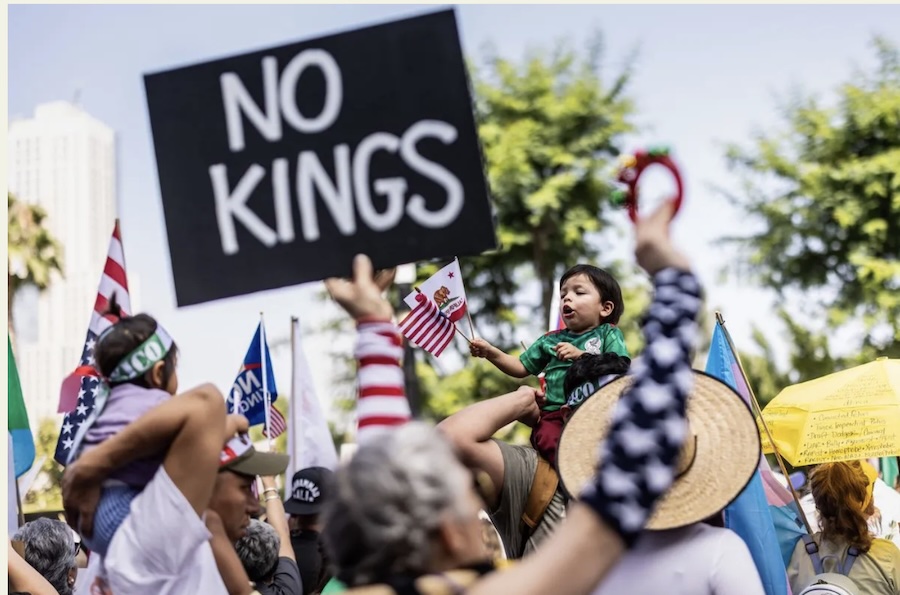
Protestors march during a “No Kings” demonstration on June 14, 2025 in Los Angeles, California. (Photo by Jay L Clendenin/Getty Images)
“Sustained, broad-based, peaceful, pro-democracy grassroots movements win. Trump wanted a coronation on his birthday, and what he got instead was millions of people standing up to say NO KINGS,” Indivisible co-founder and co-executive director Ezra Levin said in a Tuesday statement. “No Kings Day on June 14 was an historic demonstration of people power, and it’s grown into a broad, diverse movement.”
“While Trump escalates his attack with occupations of American cities and secret police forces terrorizing American communities, normal everyday people across this country are showing up every single day with courage and defiance. On October 18, we’re going to show up in the largest peaceful protest in modern American history,” he added. “Millions will come together in more cities than ever to say collectively: No kings ever in America.”
Indivisible is planning next month’s peaceful protests alongside groups including the ACLU, American Federation of Teachers, Common Defense, 50501, Human Rights Campaign, League of Conservation Voters, MoveOn, National Nurses United, Public Citizen, Service Employees International Union, and United We Dream.
Organizers announced the second Not Kings mobilization earlier this month. As a federal government shutdown loomed on Tuesday, they said that over 2,110 protests are now planned across all 50 states—more than those that drew over 5 million people to the streets in June.
(Article continued in the right column)
The struggle for human rights, is it gathering force in the USA?
(Article continued from the left column)
“We the People of the United States of America reject the Trump regime’s repeated assaults on our freedoms,” said 50501 national press coordinator Hunter Dunn. “This administration has invaded our cities, dismantled our social services, and tossed hard-working Americans into concentration camps. He has sacrificed our Constitution on the altar of fascism. On October 18th, the American people will gather together to practice two time-honored American traditions: nonviolent protest and anti-fascism.”
Trump has deployed the National Guard in Los Angeles, California, and Washington, DC, and this week is moving to do the same in Portland, Oregon, and Chicago, Illinois—where US Immigration and Customs Enforcement (ICE) agents are already carrying out the deadly “Operation Midway Blitz” as part of Trump’s national push for mass deportations. The administration is also specifically targeting pro-Palestinian foreign students, which a federal judge on Tuesday rebuked with what one reporter called “the most scathing legal rebuke of the Trump era.”
Also on Tuesday, during an unusual gathering of US military leadership in Virginia, Trump declared that the country is “under invasion from within” and generals should use American cities as “training grounds,” while Defense Secretary Pete Hegseth pledged to overhaul the inspector general process: “No more frivolous complaints, no more anonymous complaints, no more repeat complaints, no more smearing reputations, no more endless waiting, no more legal limbo, no more sidetracking careers, no more walking on eggshells!”
Meanwhile, Jacob Thomas, a military veteran and communications director for Common Defense, said that “as veterans and patriots who swore an oath to protect and defend the Constitution and the freedoms that it enshrines, we are appalled at the lengths President Trump and his billionaire buddies have gone to to strip our neighbors and communities of the rights, dignity, and freedoms owed to everyone residing in this country.”
“We must all do our part to fight back against his authoritarianism and military occupation of cities,” he continued. “We cannot allow a wannabe dictator to destroy our democracy, gut veteran healthcare, keep people from accessing the ballot box, and tank our economy. We must all join together in solidarity to fight back and secure our freedoms. Two hundred and fifty years ago, Americans stood up to a tyrant king, generations later our great-grandparents defeated fascism abroad. Now it is up to us to defeat fascism at home.”
– – – – – –
If you wish to make a comment on this article, you may write to coordinator@cpnn-world.org with the title “Comment on (name of article)” and we will put your comment on line. Because of the flood of spam, we have discontinued the direct application of comments.
